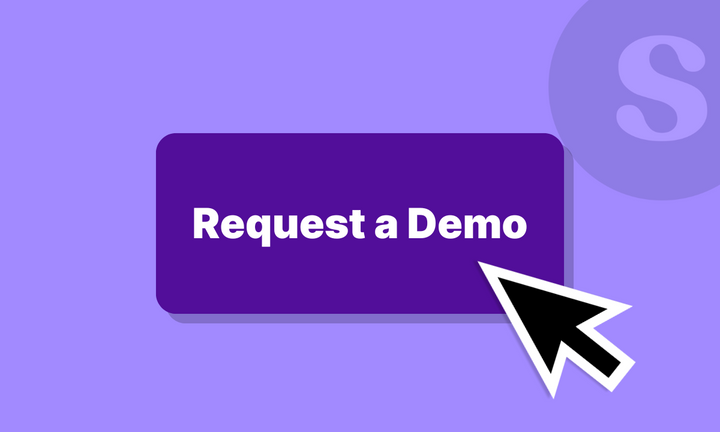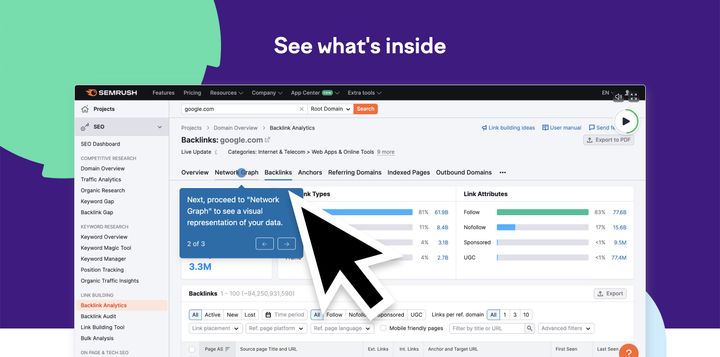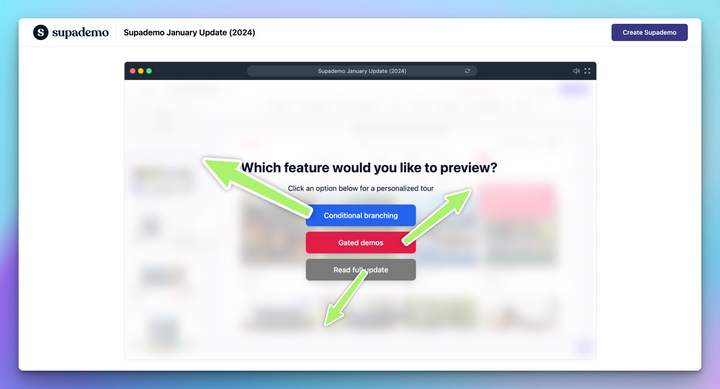Your analytics dashboard tells a frustrating story. Thousands of visitors land on your SaaS website monthly, browse features, check pricing, and read your content. But when it comes to booking demos? Crickets.
Sound familiar?
You've added CTAs, built landing pages, and published helpful blogs. Yet demo requests remain frustratingly low.
Why do customers hesitate to book demos?
Five key barriers stop qualified prospects:
- They don't understand your offer
- They're afraid you'll be too sales-heavy
- They want more information first
- There's too much friction in booking
- You lack social proof and trust signals
Each barrier has a proven solution. We've compiled 10 battle-tested strategies that SaaS companies use to turn browsers into demo bookers.
Ready to increase your demo requests? Let's dive in.
What is a demo request?
A demo request is when a prospect asks to see your SaaS product in action by scheduling a live, personalized product demo. This signals strong interest - they’re ready for a guided experience, not just a free trial.
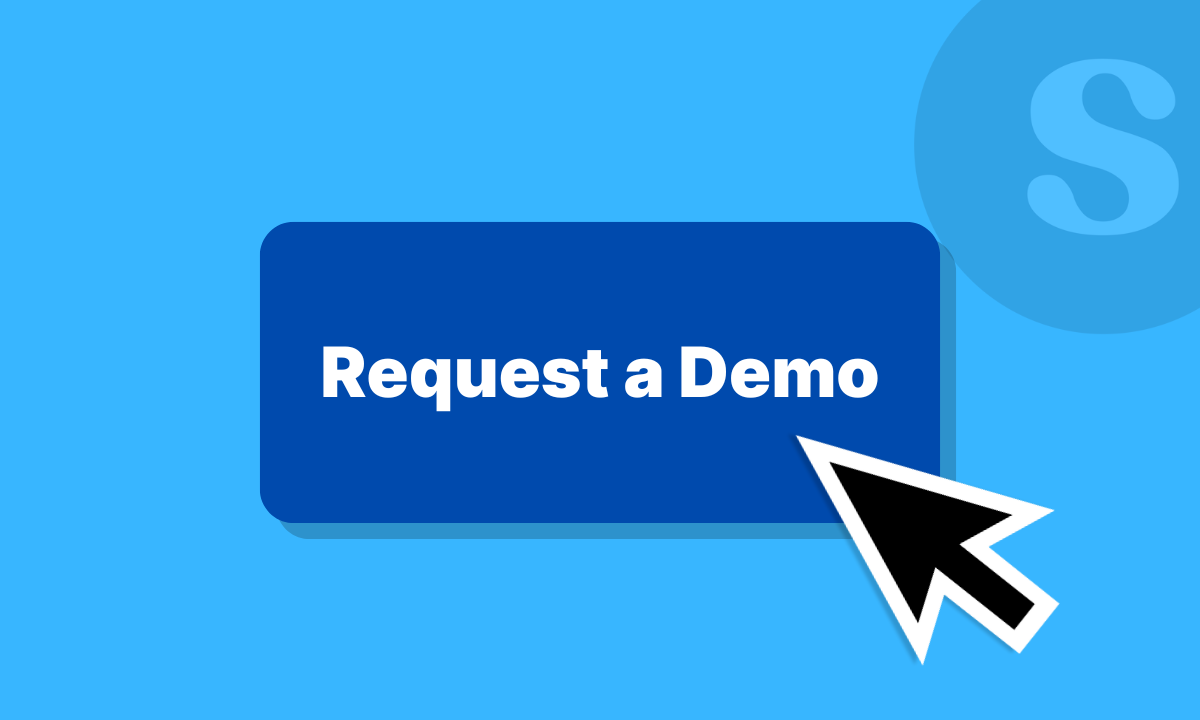
These requests are high-intent leads who have moved beyond casual browsing and are actively considering your solution. Well-qualified demo requests convert at much higher rates and are a vital step in building a healthy SaaS sales pipeline.
10 proven strategies to increase demo requests
If you're struggling to get prospects to book a demo with you, we've covered 10 actionable strategies that you can implement to get more demo requests.
1. Offer interactive product demos
74% of B2B buyers prefer learning from self-serve demos over sales conversations, according to Gartner.
Interactive demos let prospects experience your product's value before committing to a sales call. When prospects understand your product's capabilities through hands-on experience, demo requests feel like a natural next step rather than risky commitments.
How to make it work:
- Embed clickable demos on your homepage and demo landing pages
- Focus on core workflows, solving your audience's biggest pain points
- Include strategic CTAs like "Ready for a personalized demo?" at natural stopping points
- Test formats—guided tours, video walkthroughs, or sandbox environments
Interactive demos remove friction and build confidence, making prospects more comfortable requesting live demonstrations.
Here's an interactive demo that Senja created using Suapdemo:
2. Optimize your website copy and visuals
Poor messaging is one of the biggest conversion killers for SaaS websites. Your homepage and landing pages need crystal-clear copy that immediately answers three questions: what your product does, who it's for, and why it matters.
How to make it work:
- Lead with benefit-driven headlines, not feature descriptions
- Use specific numbers and outcomes in your copy ("Save 5 hours per week" vs "Boost productivity")
- Include a clear visual hierarchy with scannable bullet points or evenly spaced sentences
- Test different value propositions to see what resonates
- Match your visuals to your copy — show your product solving real problems
Here's an example of Chili Piper's homepage:

3. Simplify demo request forms
It's understandable that you'd want as much information about leads to qualify them better, but this creates massive friction. Picture this: your prospect clicks "Request Demo" expecting a quick form, only to face an interrogation — company name, size, budget, current tools, pain points, decision timeline. What started as interest quickly turns into frustration. They close the tab.
How to make it work:
- Keep forms to 4-6 fields maximum for optimal conversion rates
- Use data enrichment tools to auto-fill company details from email domains
- Make form fields visually clean with labels above input boxes
- Sprinkle social proof to showcase credibility
Take a look at Notion's demo request page:

4. Lead with social proof
Prospects need reassurance that they're making the right choice. Social proof removes final barriers by showing that others like them have succeeded with your product.
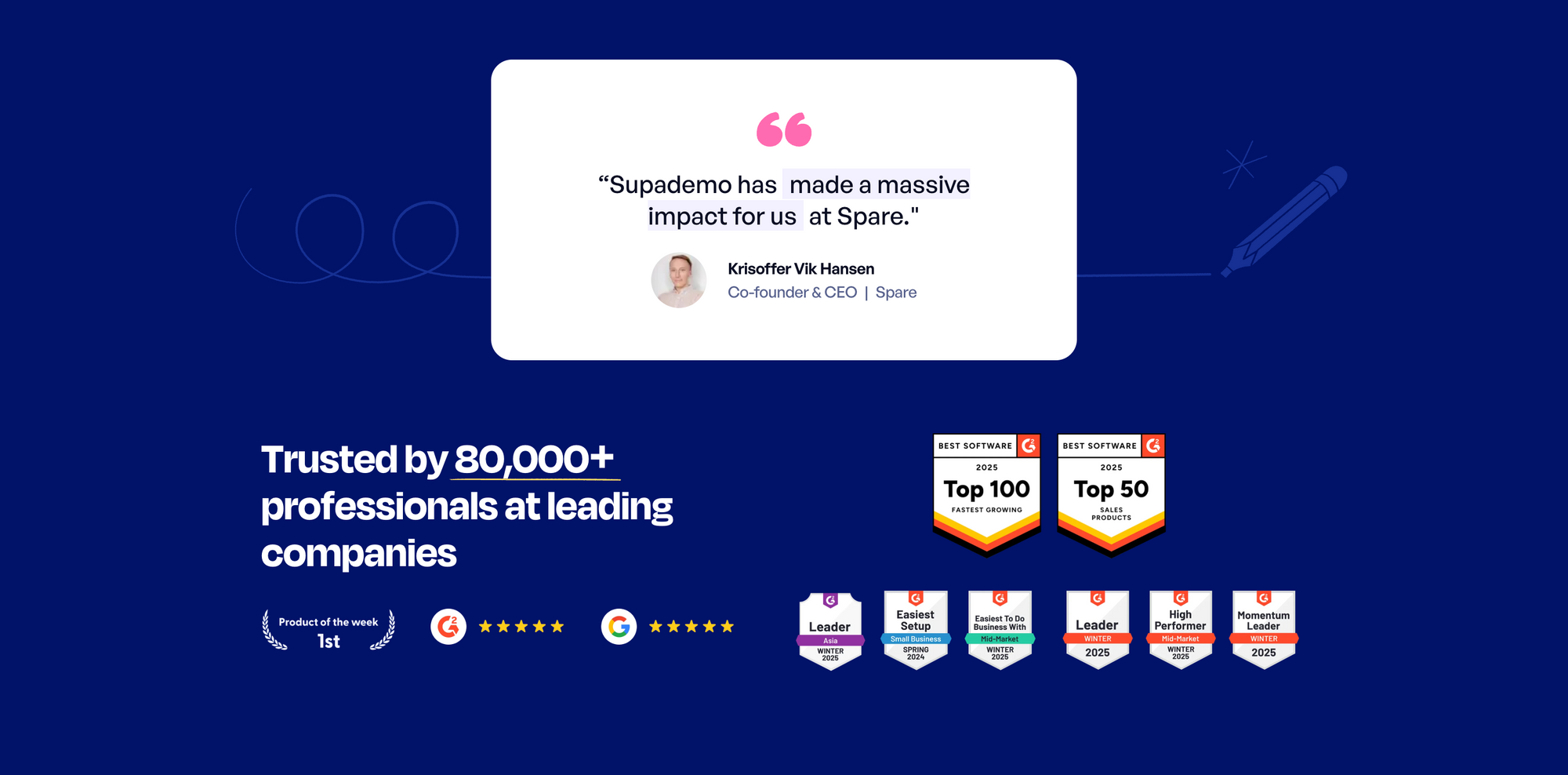
How to make it work:
- Display customer logos prominently on the homepage and demo pages
- Feature testimonials from customers matching your target personas
- Show G2, Capterra, or Trustpilot ratings near demo CTAs
- Include case studies with measurable results
- Add user metrics if impressive ("Join 10,000+ companies")
- Amplify social proof by leveraging social media channels
Position social proof strategically where prospects decide whether to request demos.
5. Optimize your content marketing strategy
If your blog gets thousands of visitors monthly but barely any demo requests, your content marketing needs fixing. You're either missing the right balance of TOFU, MOFU, and BOFU content, or you're educating buyers without connecting solutions back to your product.

How to make it work:
- Balance your content funnel — create awareness content, comparison pieces, and decision-stage content
- Include interactive product demos showing how your product solves specific problems mentioned in your blog posts
- Gate high-value resources like ROI calculators behind demo forms
- Add demo CTAs that connect directly to the problem you just explained
- Use comparison content to position your product against alternatives
The key is connecting education to action. Don't just explain problems - show how your product solves them. When prospects finish reading your content, they should understand both the challenge and why your solution fits.
In fact, according to Gartner, engaging prospects with self-paced interactive demo videos, replacing static assets can increase MQLs to SQLs by 36%!
6. Thought leadership content
When prospects need solutions, they request demos from executives they already trust rather than researching unknown competitors. Thought leadership builds this trust early by positioning your leadership team as industry experts who understand real challenges.
How to make it work:
- Have your C-suite consistently share insights about industry problems they're solving and their unique approach
- Create content around controversial takes, lessons from failures, and contrarian viewpoints
- Share specific examples of how you've solved problems for customers without being promotional
- Publish consistently on LinkedIn, appear on podcasts, and engage in industry communities where your ICP is active
- Always connect insights back to the broader challenges your prospects face
7. Account-based marketing
Your best prospects visit your pricing page, read case studies, and then leave without requesting a demo. These high-intent visitors know about your product but need more convincing. ABM helps you identify these warm accounts and create targeted campaigns to bring them back.
The goal is to stay visible during their evaluation process so when they're ready to move forward, you're the obvious choice for a demo.
How to make it work:
- Use visitor identification tools to track which companies visit your high-intent pages
- Research these accounts to understand their specific challenges and use cases
- Create personalized content like custom case studies or industry-specific demos
- Run targeted LinkedIn and display ads to decision-makers at these companies
- Coordinate follow-up sequences that reference their previous website activity
ABM turns anonymous website traffic into known prospects you can systematically nurture. Instead of hoping they return, you proactively re-engage them with content that addresses their specific situation.
8. Influencer partnerships
According to Forbes, 94% of B2B marketers say influencer marketing is a successful strategy. Your prospects look up to people with credibility in your industry. Influencer partnerships help you build credibility, brand awareness and generate demand through industry experts who consistently provide value, not celebrity endorsements.
These experts demonstrate real-world use cases and ROI while educating their audiences about industry challenges and solutions.
How to make it work:
- Identify industry thought leaders, analysts, and professionals who your ICP follows and trusts
- Focus on LinkedIn, podcasts, and industry blogs where B2B buyers consume content
- Collaborate on educational content like tutorials, case studies, and product walkthroughs
- Provide influencers with exclusive access to your product and data to create authentic reviews
- Build long-term relationships rather than one-off promotional posts
9. Personalize email campaigns
You have thousands of email subscribers, but barely any demo requests coming from your campaigns.
The disconnect? You're treating a startup founder the same as an enterprise VP, sending identical messages about generic "productivity gains" instead of addressing their specific challenges and use cases.
How to make it work:
- Create email segments for visitors who viewed pricing pages, case studies, demo requests, and competitor comparison pages
- Set up automated emails that trigger 24-48 hours after someone visits high-intent pages like pricing or product tours
- Write personalized subject lines mentioning their company name and specific challenges – "How [Company] can reduce [specific problem] by 40%"
- Follow up with context referencing exactly which pages they visited and resources they downloaded in previous emails
- Gauge prospect interest by sharing an interactive demo of your product to eliminate any friction

10. Host live webinars
You're struggling to get prospects on sales calls because they're not ready to commit one-on-one time until they understand your value. Live webinars let you demonstrate your expertise and product capabilities to multiple prospects simultaneously, warming them up for demo requests.
How to make it work:
- Choose educational topics that address specific industry challenges your ICP faces
- Include live product demonstrations showing real use cases during the webinar
- Host interactive Q&A sessions where prospects can ask questions about implementation
- Follow up immediately with personalized emails offering one-on-one demos to engaged attendees
- Repurpose webinar content into blog posts, video clips, and social media content
3 expert tips on how to increase demo requests
Beyond the 10 core strategies, here are three game-changing insights from SaaS marketing experts who've cracked the demo request code for their companies.
Know your customers' words, not yours
Most SaaS companies write homepage copy that sounds impressive to internal teams but confuses prospects. Roxana Irimia, VP of Marketing at Chili Piper, emphasizes that great marketing starts with deep customer understanding, not clever copywriting.
Roxana's approach involves listening to actual sales calls to hear how leads describe their challenges, then incorporating that language directly into homepage copy.
Create progressive paths to demo requests
Your "Book a demo" button converts at 1.5%? You're not alone. Matt Lerner, Founder of SYSTM, explains why this traditional CTA fails and shares five alternatives that increase demo requests.
Matt's core insight: "Book a demo" only converts 1.5% because prospects recognize it means "talk to a salesperson." This creates psychological friction for 98.5% of visitors who want to achieve their goals immediately, not get sold to.
Instead, Matt suggests providing self-serve demos, offering valuable content around pain points, and answering questions immediately through live chat. This progressive engagement naturally increases demo requests.
Here's Matt's breakdown of why demo requests fail and what works instead:
Product-led SEO to drive conversion
Joseph Lee, founder of Supademo, discovered how to use SEO to naturally showcase your product and drive demo requests.
Hear this strategy directly from him:
Joseph targeted MOFU keywords like "[competitor] demo" and "[tool] tutorial" where prospects hit gated content. Using Supademo, he created hundreds of interactive demo pages that let users experience products directly through search. This dogfooding approach proved his product's value while solving his own marketing challenge.
So, what does this mean for you?
You follow this strategy by embedding interactive product demos throughout your content to showcase aha moments naturally—in blogs, social posts, and competitor comparison pages. When prospects experience your product solving their exact problems organically, demo requests become inevitable next steps.
Ready to skyrocket your demo signups? Try Supademo now!
FAQs
What is the demo conversion rate?
A demo conversion rate measures the percentage of prospects who convert to paying customers after attending a product demonstration.
To calculate the demo conversion rate, divide the number of prospects who took the desired action (e.g., signed up for a trial) by the total number of demos you conducted, and then multiply by 100 to express that as a percentage, according to GetCensus.
What are interactive demos?
Interactive demos are clickable, self-serve product experiences that let prospects explore your software without signing up. Unlike static screenshots, they simulate real workflows, helping prospects understand value before committing to sales calls.
How do I know if my demo page is optimized?
Track conversion rates, form abandonment, time on page, and scroll depth. A/B test headlines, form fields, and CTAs. Optimized pages have clear value propositions, minimal friction, and strategic social proof placement.
What’s the ideal number of fields on a demo request form?
Keep demo forms to 4-6 fields maximum for optimal conversion. Only ask for essential information: name, email, company, and role. Use data enrichment tools to auto-fill additional details from email domains.
How can I personalize demo invites for higher response rates?
Use the prospect's name in subject lines (50% higher open rates), mention their company name, and reference specific pages they visited like pricing or product tours.
Include recent company news like funding rounds or product launches, and address their specific industry challenges rather than generic pain points. Send follow-up emails 24-48 hours after high-intent page visits with context about their previous activity.


